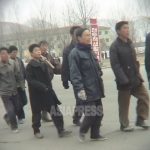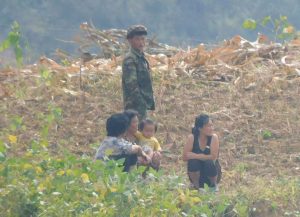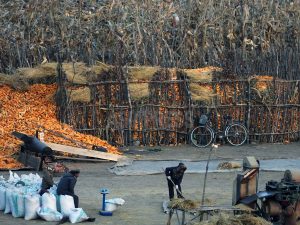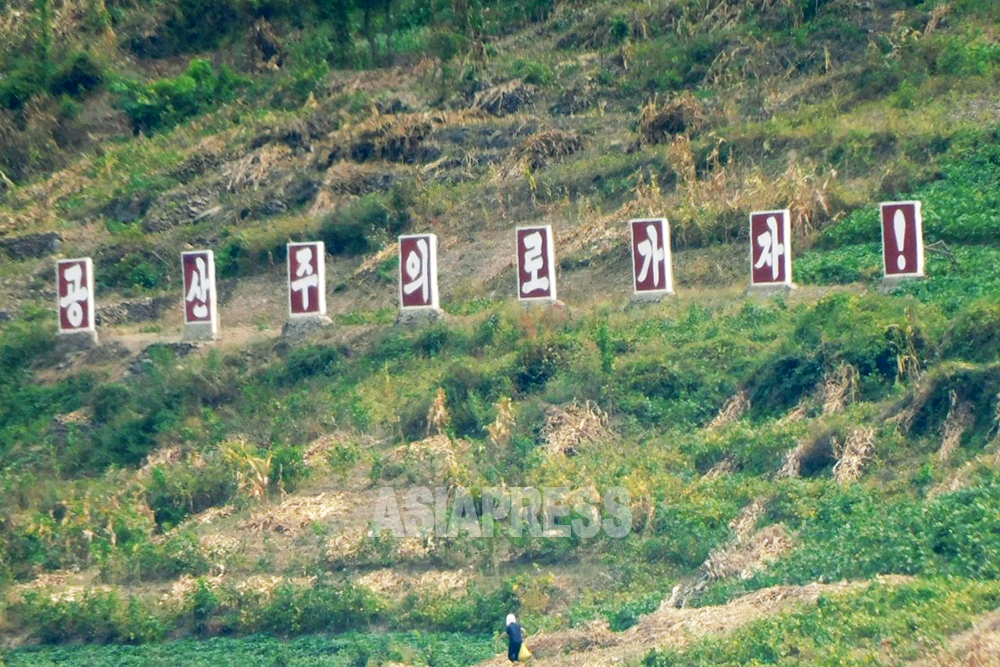
In 2023, statistics regarding North Korea’s trade to China showed that forestry-based exports topped the list, surpassing minerals as the country's leading export. Drawing on information from North Korean reporting partners, ASIAPRESS looks behind the scenes of these changes to shed light on the working conditions of workers in North Korea's forestry product processing industry, which are often overshadowed by statistics and numbers. (JEON Sung-jun)
◆ Wigs and fake eyelashes emerge as a staple of North Korean exports
According to statistics from China’s General Administration of Customs, a total of 1,680 tons of wigs, beards, and eyelashes were imported from North Korea in 2023. Valued at about $163 million, or about 220 billion won ($163 million), these items consistently ranked first among North Korean exports throughout 2023, with the exception of January.
In recent years, these items have become so important that they have surpassed the total value of other exports, including minerals and basic chemicals, which were previously the top exports to the country. After mineral exports were banned by UN sanctions following North Korea's nuclear test and subsequent missile launches in 2017, the country's newfound export focus has been on manufactured goods such as wigs and eyelashes.
In December 2023, for example, the export value of wigs and eyelashes was $15.28 million. This is a staggering 1.6 times the total export value of all other items, which was $9.49 million. This pushed North Korea's exports to China in 2023 to $291.187 million, up from $213.147 million in 2018, the year before the pandemic.
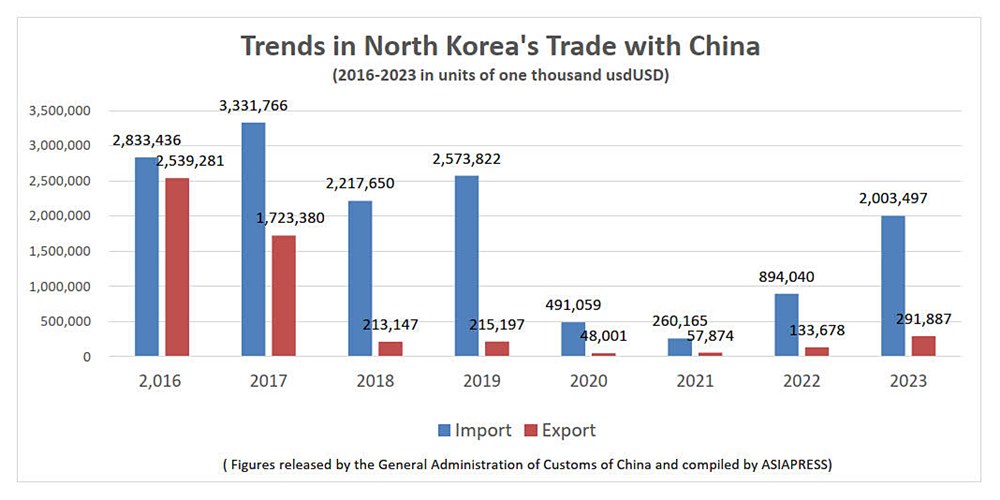
◆ Why wigs and fake eyelashes?
The sudden emergence of wigs and eyelashes as an important North Korean export is due to UN Security Council and US sanctions, which have been tightened since 2017. As North Korea has struggled to offset the impact of sanctions on its exports to the rest of the world, the country has moved to export non-sanctioned exports since 2018.
Following UN Security Council sanctions (UNSCRs 2356, 2371, 2375, and 2397) in response to North Korea's nuclear test and subsequent missile launches in 2017, most of the country's overseas workers were repatriated to North Korea and the number of banned items was expanded, causing the value of its exports to plummet to less than one-ninth of the previous year's value of about $1.73 billion in 2017. The North Korean authorities then began to scramble to acquire foreign currency.
China's demand for forestry products is what the North Korean authorities have been focusing on. According to ASIAPRESS’s North Korean reporting partners, the industry began to expand in North Korea in 2018. That's when a number of trading companies entered the wig and eyelash production business.
"It started in earnest in 2018, when trading companies recruited people, trained them for two weeks, and then gave them jobs. They mainly made wigs, hats and beadwork. It usually took three days to a week to make one wig, and they were paid two kilograms of rice in return, sometimes three to five kilograms, depending on the shape of the wig." (Yanggang Province reporting partner, January 2018)
What started as a small business in some trading companies along the border has recently become a national center. It is expanding to Gilju, Kimbuk, and Hamhung to cover the shortage of forest processing labor, according to a reporting partner in Hyesan.
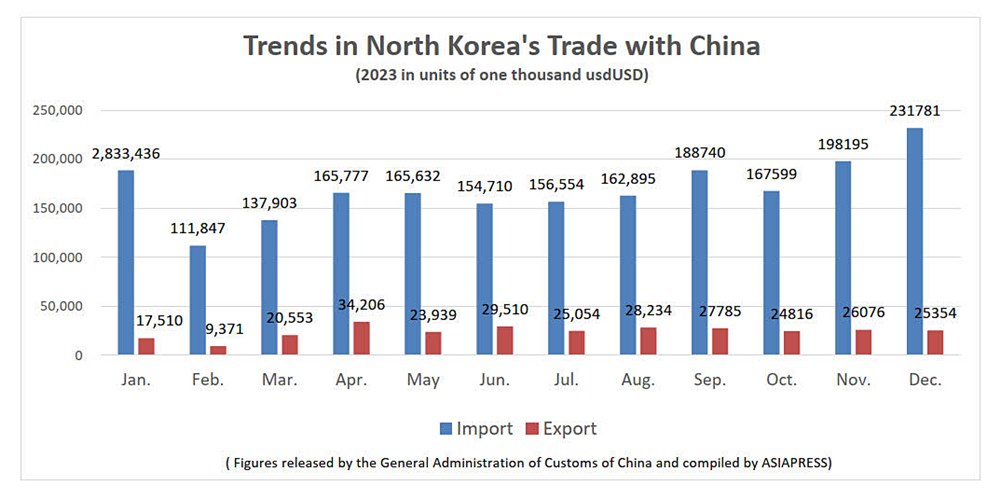
◆ People are being forced to engage in labor in difficult conditions
In the midst of these changes, working conditions for North Koreans in the forestry industry are very poor. In August 2023, a document sent by a reporting partner vividly captured the reality of North Koreans working in the forest products industry.
"Working day and night, day and night to earn food - under 12 volt LED lights, or candles when there is no light - has caused many people to suffer from rapidly deteriorating eyesight. For a while, we ran out of reading glasses in the market, and now we think people wearing glasses are 'wig makers.'"
In December 2023, a reporting partner said that as the government took full control of the industry, the treatment of workers has worsened because they are only able to survive on the wages and food provided by their companies.
"Before the pandemic, each trading company hired temporary or permanent workers and gave them 25 kilograms of rice, 1 liter of soybean oil, and 100 yuan a month."
But since the state has tightened its grip on trade, he says, the labor provided by forestry products processing companies has been limited to rice or corn from North Korea. There are no bonuses or incentives from the trading company, he explains.
Since forestry products are not subject to UN sanctions, this trend in North Korea's trade with the rest of the world is likely to continue. Behind the growing trade statistics, it also means that the suffering of North Koreans has increased.
※ ASIAPRESS communicates with reporting partners through Chinese cell phones smuggled into North Korea.
- <Inside N. Korea> Efforts to implement the“20x10 policy for regional development” begin…As people are mobilized to construction projects, complaints start to emerge
- <Inside N. Korea> Kim Jong-il birthday festivities smaller than in the past…special rations reduced due to lack of funds…focus more on labor mobilizations, with some events canceled
- <Inside N. Korea> S.Korea is the enemy…Trends after Kim Jong Un’s “anti-unification policy” announcement (1) People are surprised and confused
- <Inside N. Korea> Lack of foreign exchange leads to drop in RMB…Provincial trading companies can’t trade with China due to lack of foreign cash
- <Inside N. Korea> Authorities threaten defectors with firing squads and imprisonment at neighborhood watch unit meetings…Massive search launched to find suspected defector





